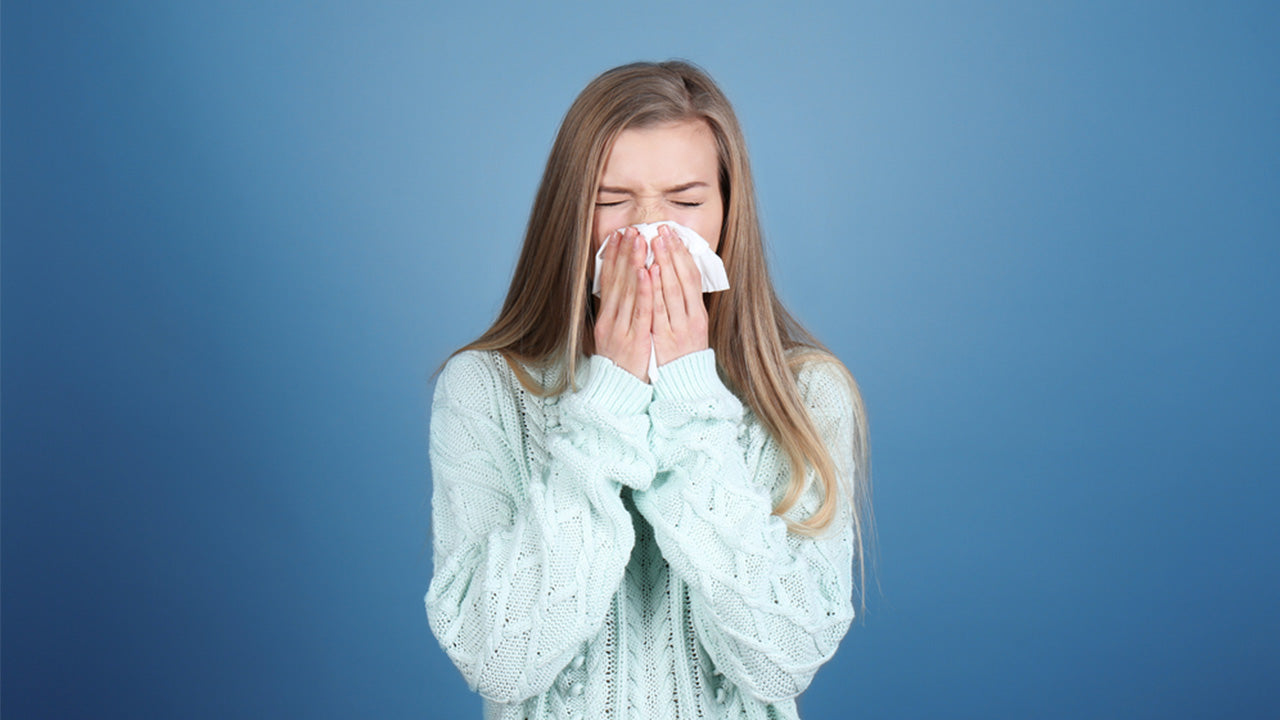Lower Respiratory Tract Infection and Chronic Lower Respiratory Diseases
 By: by Amino Science
By: by Amino Science

Lower respiratory tract infection (LRTI) is often used as a synonym for pneumonia. However, this condition can refer to a host of illnesses that affect the airways below the larynx. While many people recover quickly from LRTIs, these diseases can be very serious. In fact, the European Lung Foundation notes that acute lower respiratory tract infections are the leading cause of sickness and death in people around the globe. For this reason, individuals with acute and chronic lower respiratory diseases should not hesitate to seek medical attention.
Types of Lower Respiratory Tract Infection
Because there are several types of lower respiratory tract infections, it can be difficult to determine which one you have. Below are some of the more common lower respiratory tract diseases, along with symptoms to look out for.
Acute Bronchitis
Usually short lasting, this condition affects both adults and children. The most common symptom is a cough that doesn’t go away. With bronchitis, the cough can be dry or wet. You may also suffer from fatigue, post-nasal drip, headache, and shortness of breath. Because of a chronic cough, many bronchitis sufferers also have trouble sleeping.
Bronchiolitis
Affecting the lower airways, this illness is most common in babies under 2 years of age. Coughing and wheezing are the most likely symptoms. Bronchiolitis tends to occur in the winter but can develop at any time of year. If your child experiences audible wheezing, vomiting, or lethargy, don’t hesitate to seek medical attention.
Pneumonia
A lung infection, pneumonia results from various organisms, including bacteria and fungi. The condition may result in cold-like symptoms lasting for up to 4 weeks. Coughing, fever, whole body fatigue, and trouble breathing are common. In some cases, pneumonia patients develop a buildup of fluid around the lungs, a condition known as pleural effusion. Children under the age of 2 and those with underlying health conditions should be seen by a health care provider if they develop pneumonia to prevent potentially serious side effects.
Note that upper respiratory infections that start out affecting the upper respiratory tract, like the common cold or flu with milder symptoms such as runny nose and sore throat, can develop into more serious illnesses, such as infection of the lungs. For this reason, you shouldn’t hesitate to seek medical attention if you’re feeling ill.

Causes of Lower Respiratory Tract Infection
Acute and chronic lower respiratory diseases are caused by both viral infections and bacterial infections. These conditions spread by direct contact with infected persons or through the air after an infected person has coughed or sneezed.
In most cases, healthy individuals who have become infected with a virus will form antibodies to fight it off. They are then immune from acquiring that form of the virus again. However, if your lower respiratory tract infection is caused by bacteria, you may need medical intervention to get well.
Certain risk factors increase the likelihood you will develop a lower respiratory infection. Children, the elderly, and people with compromised immune systems are more prone to dangerous infections.
Most cases of pneumonia in adults stem from contact with the Streptococcus pneumoniae or Haemophilus influenzae bacteria, but some viruses can also cause pneumonia, most commonly the respiratory syncytial virus (RSV) in children, and sometimes influenza.
Individuals who are hospitalized may contract a different type of pneumonia resulting from hospital germs. Those in long-term care facilities are at high risk for healthcare-acquired pneumonia. Hospital-pneumonia and healthcare-acquired pneumonia patients often need supportive care and medication in order to make a full recovery.
Finally, community-acquired pneumonia (CAP) can be contracted in a community setting outside of hospitals, nursing homes, or other healthcare institutions. CAP is the primary cause of death from infectious diseases in developed countries.
Antibiotic Treatment for Lower Respiratory Infection
Lower respiratory tract infection recovery times vary based on the infection type. In many cases, your doctor will prescribe antibiotics to treat the infection and expedite recovery. It’s important not to overuse antibiotics, as doing so can lead to antibiotic resistance. When this happens, bacteria mutate and become resistant to the effects of certain drugs.
Some of the most commonly prescribed antibiotics for lower respiratory infections include: Amoxicillin, Augmentin, and Doxycycline. If your doctor recommends antibiotics, make sure to take the entire course as prescribed to avoid creating superbugs.
It’s important to note that not all cases of lower respiratory infection require antibiotics. Acute bronchitis usually resolves on its own, provided that patients drink plenty of fluids and get enough rest. If you’ve been sick for more than a week with a lower respiratory infection and don’t seem to be improving, don’t hesitate to contact your doctor.
What Are Chronic Lower Respiratory Diseases?
Many lower respiratory diseases are acute, and patients tend to recover within a short period of time. However, some patients suffer from chronic lower respiratory diseases, such as chronic obstructive pulmonary disease (COPD). According to the Centers for Disease Control (CDC), COPD was the third most common cause of death in the United States in 2011.
A term for a group of diseases, the lung disease COPD refers to conditions that compromise airflow and breathing. These diseases include emphysema, chronic bronchitis, and even asthma, and can lead to acute respiratory failure. While some conditions like asthma are genetic, others result from environmental factors. You can reduce your odds of developing COPD by:
- Refraining from smoking cigarettes or spending time with people who are smoking
- Avoiding exposure to residential and commercial pollutants
- Washing hands several times a day to prevent respiratory infections
You can minimize the severity of COPD by visiting your doctor regularly to ensure these conditions are detected early when treatment is most effective.
Essential Amino Acids and Recovery
You may get relief from a lower respiratory disease with antibiotics, but even so the ailment can take a lot out of you. Even with successful antibiotic therapy, your immune system must be functioning at peak performance, yet the stress of the disease often limits the immune system’s efficiency. In addition, the stress of the disease, coupled with poor appetite and a low level of activity, will result in loss of muscle mass and strength, which may lead to a long-term loss in physical function.
Optimal nutritional intake is the best way to support your immune function and to minimize the loss of muscle mass. In fact, the primary goal of recovery is to replace lost muscle mass and function.
When you are sick and battling a lower respiratory infection, it is particularly important to maintain your intake of essential amino acids. Essential amino acids are the key components of the diet that support the synthesis of new proteins, and they cannot be produced in the body.
To make sure you’re getting the amino acids your body needs to recover, eat a variety of high-quality protein food sources, including fish, eggs, meat, and dairy products. Taking a dietary supplement of essential amino acids will also help ensure an optimal level of intake of these vital nutrients, particularly if you find it difficult to eat the amount of protein food sources required for healthy immune function.
As your appetite returns, these dietary supplements of free essential amino acids will help support muscle growth and improve function in a way that you cannot achieve with normal dietary protein food sources alone.

Up to 25% off Amino
Shop NowTAGS: conditions
Join the Community
Comments (0)
Most Craveable Recipes




 833-264-6620
833-264-6620



















